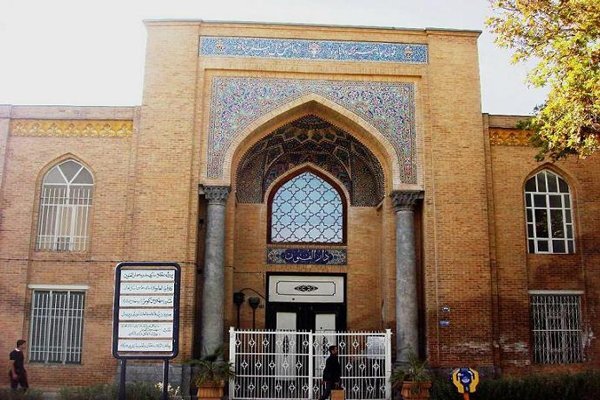
TEHRAN – Dar ul-Funun, which is a symbol for the start of the modern education era in the country, holds the potential to be turned into a school of traditional arts, Iran’s tourism minister said on Sunday.
“Some schools of the Ministry of Education, such as Dar ul-Funun, have a very good capacity to become schools of traditional arts,” Ali-Asghar Mounesan said.
He made the remarks during a meeting with Education Minister Mohsen Haji-Mirzaei, in which they discussed ways to deepen cooperation in the fields of travel services, preservation of cultural heritage, as well as equipping and enriching cultural places.
Established in 1851 in the heart of Tehran, Dar ul-Funun is renowned as Iran’s first modern university. Parts of the property have recently been handsomely restored to make it into a museum on education.
Its courtyard houses an atmospheric garden that is hemmed by walls featuring Persian poetry inscribed on decorative tiles.
According to Encyclopedia Iranica, the number of students in its first year reflected an immediate popularity of Dar ul-Funun, with about 105 students enrolling in seven main subjects.
The center was opened by Mirza Taqi Khan Farahani (1807-1852), who was nicknamed ‘Amir Kabir’ who was chancellor under Naser al-Din Shah Qajar, appearing to be one of the most capable and innovative figures in the whole Qajar period.
Traditional arts are learned from person to person, passed from one generation to the next, and influenced by culture, family, ethnicity, and era. With 14 entries, Iran ranks first globally for the number of cities and villages registered by the World Crafts Council, as China with seven entries, Chile with four, and India with three ones come next.
In January 2020, the cities of Shiraz, Malayer, and Zanjan and the village of Qassemabad were designated by the WCC- Asia Pacific Region, putting Iran’s number of world crafts cities and villages from ten to 14.
Shiraz was named a “world city of [diverse] handicrafts”. Malayer was made a global hub for woodcarving and carved-wood furniture. Zanjan gained the title of a “world city of filigree”. And Qassemabad village, which is nationally known for its traditional costumes, was also promoted to a world hub of handicrafts. Chador Shab, a kind of homemade outer-garment for women, was, however, the main subject for the WCC assessment for the village.
Iran exported $523 million worth of handicrafts during the calendar year 1398 (ended March 19, 2020). Of the figure, some $273 million worth of handicrafts were exported officially through customs, and about $250 million was earned via suitcase trade (allowed for customs-free and tax-free transfer) through various provinces, according to data provided by the Ministry of Cultural Heritage, Tourism and Handicrafts.
Ceramics, pottery vessels, handwoven cloths as well as personal ornamentations with precious and semi-precious gemstones are traditionally exported to Iraq, Afghanistan, Germany, the U.S., the UK, and other countries.
AFM/
"traditional" - Google News
March 08, 2021 at 01:24AM
https://ift.tt/38kBW4V
Dar ul-Funun has potential to turn into school of traditional arts: minister - Tehran Times
"traditional" - Google News
https://ift.tt/36u1SIt
Shoes Man Tutorial
Pos News Update
Meme Update
Korean Entertainment News
Japan News Update
Bagikan Berita Ini















0 Response to "Dar ul-Funun has potential to turn into school of traditional arts: minister - Tehran Times"
Post a Comment